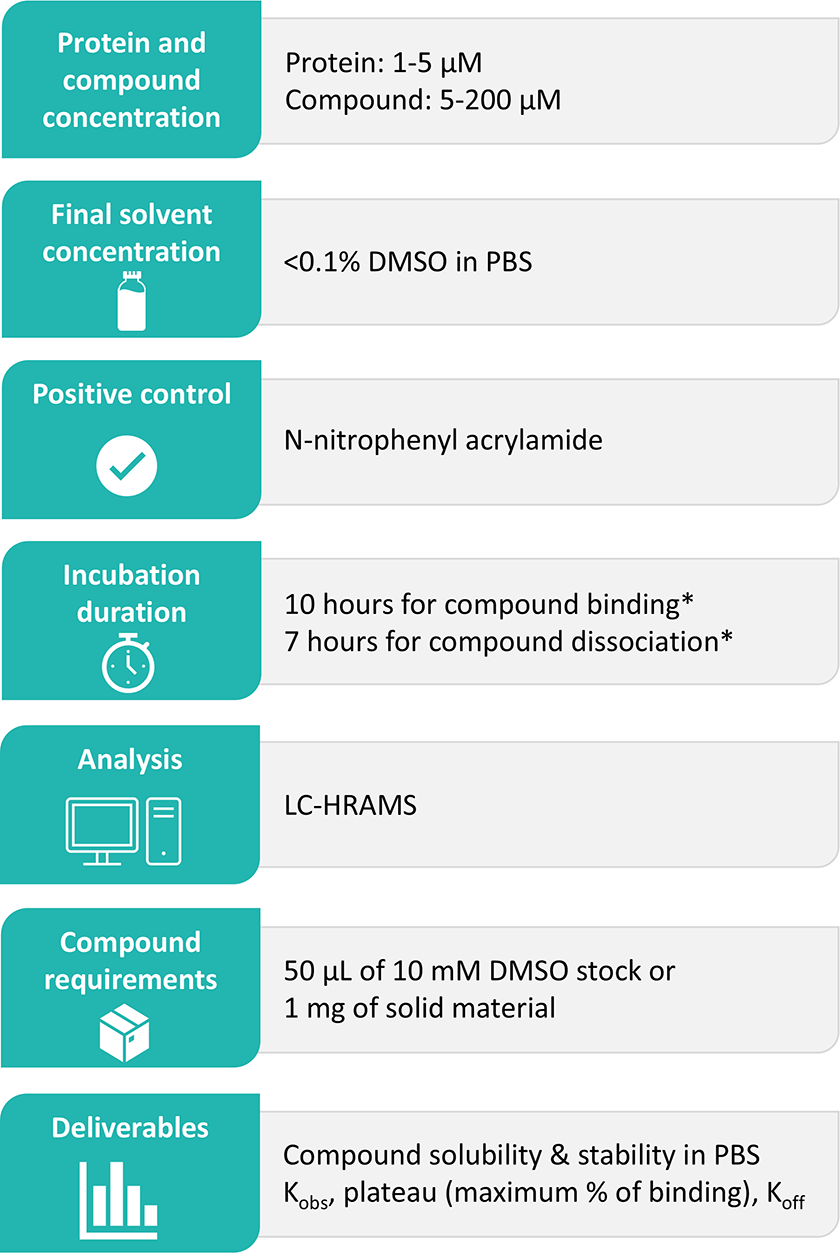- About
-
Solutions
-
Services
- Biosciences
- Chemistry
- Integrated Drug Discovery
- Computer Aided Drug Design
- Hit Identification
- Target Classes and Modalities
- Therapeutic Areas
-
A-Z
- A
- B
- C
- D
- E
- F
- G
- H
- I
- K
- L
- M
- N
- O
- P
- R
- S
- T
- V
- X
-
Services
- Library
- News & Events
- Careers
Reversible Covalent Inhibitor Binding Assay
Reversible covalent inhibitors bind to a target protein via a covalent bond, but this bond is not permanent and can be broken. Reversible covalent inhibitors still have sustained target engagement but also have additional advantages, such as lower off-target effects and low immunogenicity risk.
For irreversible covalent inhibitors see our kinact / Ki assay.
Domainex’s Standard Experimental Procedure:
Domainex’s platform for reversible covalent binders monitors real-time binding kinetics. The target protein and the compound are incubated together at the selected concentration and the binding percentage at different time points is measured by liquid chromatography-high resolution accurate mass spectrometry (LC-HRAMS). The reversible nature of these fragments means the binding does not reach completion as an equilibrium is established. This results in a plateau of the binding curve at a particular point. The data is processed to obtain the adjusted Kobs value and the percentage at which the binding plateaus. Once the initial binding has reached a plateau, remaining non-bound compound is removed from the sample by ultrafiltration. At this point the initial compound binding starts to reverse to restore the equilibrium of the system. The decreasing binding percentage over time is measured by LC-HRAMS. The resulting plot is used to estimate the Koff rate value for the compound.

Figure 1: Characterisation of reversible covalent binders. Left: 2 µM target protein was incubated with 50 µM of the fragment compound. The binding percentage at each time point was measured by LC-HRAMS. The resulting plot provided information on the adjusted Kobs value and the percentage at which the binding plateaued. Right: Once the initial binding had reached a plateau, remaining non-bound fragment was removed, the decreasing binding percentage over time was measured by LC-MS, and the Koff rate was estimated.
Data analysis
The increase of binding percentage over time for a compound concentration is used to calculate the Kobs value and the plateau using the following equation:

After removing the non-bound compound, the decrease of binding percentage overtime is used to calculate the Koff value using the following equation:

Deliverables
The results are reported in Excel file format including Kobs, Plateau, Koff, as well as compound solubility and stability in PBS at 37 °C.
Turnaround time from receipt of the test compounds to release of the data is typically less than 2 weeks.

*Other options available on request
Start your next project with Domainex
Contact one of our experts today